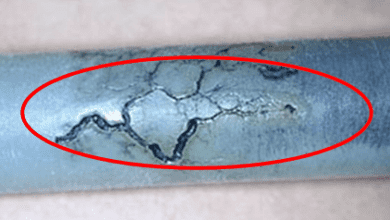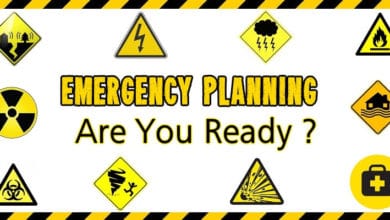Protection
-

Design & Installation of Control & Monitoring Systems in Electrical Engineering
Design, Installation, Testing & Commissioning of Control & Monitoring Systems Design Implementation The preparation of the design of control and monitoring systems requires the definition of a set of actions:…
Read More » -

Protective Actions to Avoid & to Reduce Electric Hazardous
Protective Actions to Reduce & Avoid Electric Hazardous General Rules As general safety rules for EHV, HV and MV installations (EHV: Extra High Voltage – V ≥ 150 kV. HV:…
Read More » -
Treeing in XLPE Insulated Medium & High Voltage Cables
Electrical Treeing in XLPE Insulated MV & HV Cables (Manuel Bolotinha) Nowadays XLPE (Cross-linkedpolyethylene) is the most used insulation material of medium and high voltage cables, which presents important advantages over…
Read More » -
Personal Protective Equipment (PPE) for Electrical Works
Electrical Works – Personal Protective Equipment (PPE) To protect the employee’s body from injury Personal Protective Equipment (PPE) must be used. Basic PPE consists of: Cotton protective clothing with long…
Read More » -
Types & Characteristics of Surge Arresters
Surge Arresters – Types & Characteristics Introduction Atmospheric lightning phenomenon on overhead lines and bare conductors or metallic structures of an outdoors substation and over voltages due to switching operations…
Read More » -
Electrical Transmission Networks – EHV and HV Overhead Lines
Electrical Transmission Networks and Overhead Lines Generally, EHV and HV (High Voltage; 60 kV ≤ V < 150 kV, EHV: Extra High Voltage; V ≥ 150 kV) is used for…
Read More » -
Electric Stress Control in Cable, Joints & Terminations
How to Control Electric Stress in Cable Joints & Terminations? Introduction Power cables are of great importance in power transmission and distribution systems. Terminations and joints are the basic accessories…
Read More » -
Emergency Planning for Safety & Protection in Industries & Installations
Emergency Planning in Industries & Installations Emergency Plan Health and Safety organization and national regulations call for industrial and commercial companies and installations to have an emergency plan, to minimize…
Read More » -
Cables Feeder Protection – Faults Types, Causes & Differential Protection
Cables Feeder Protection – Overcurrent & Differential Protection Common Types of Faults Common failure modes and faults of cables are: Electrically induced failures Mechanically induced failures Thermally induced failures Metallic…
Read More »







